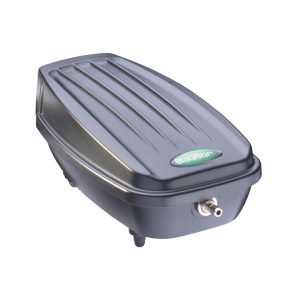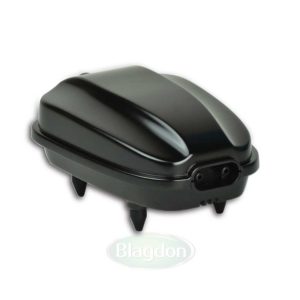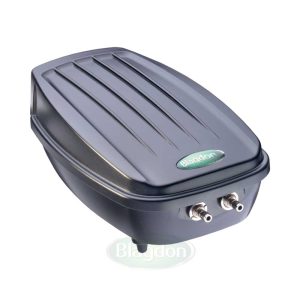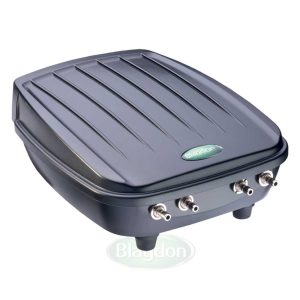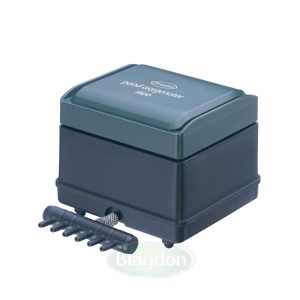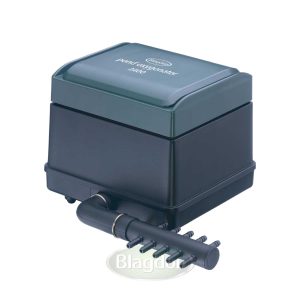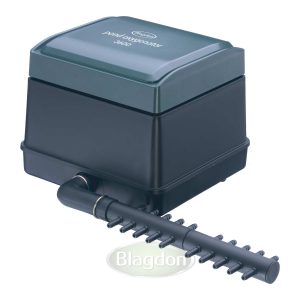Pond Air Pumps

Keep your pond healthy and thriving with our pond air pumps. We have a wide selection of pond air pumps that are designed to provide oxygen to your pond water, which is essential for the health of your fish and plants. Our air pumps come in various sizes and capacities to suit ponds of all sizes. Whether you have a small backyard pond or a large commercial pond, we have the right air pump for you.
Pond Air Pump FAQs
What is a pond air pump and how does it work?
An air pump is a device that is used to increase the oxygen levels in a pond by pumping air into the water.
The pump works by forcing air into your pond’s water, creating the bubbles needed for surface agitation – this is when the bubbles rise to the water surface and burst. Gases are exchanged between your water and the atmosphere, increasing the rate that oxygen dissolves in water.
This all helps to increase oxygen levels, vital for the health of fish and plants alike.
Do I need an air pump in my pond?
If you’re keeping fish in your pond, then you’ll need an air pump to ensure they get enough oxygen to survive. Even if you don’t have fish, it can still benefit your pond by keeping your water fresh and healthy. Without the desired amount of oxygen, your pond can quickly become and prone to algae growth.
What air pump do I need for my pond?
Blagdon Water Gardening supplies 5 types of air pumps for ponds:
Pond Oxygenator Kit 1/2/4 outlet: This kit contains the air pump, air stone and 5m air line. A great option for use in an outdoor water garden.
Pond Oxygenator 1800/2400/2600: High output air pump for ponds, specifically designed for water garden application. Available in three sizes to accommodate different ponds.
Liberty Pond Oxygenator Kit: Solar powered pond air pump with a battery backup. Includes 2x air stones and 2x 6ft airline. Ideal for ponds without access to electricity.
How do I choose the right air pump?
When choosing your air pump, it’s essential to take factors into account such as:
- Pond size: Choose a pump that can adequately oxygenate the volume of water in your pond. The larger the pond, the more powerful the pump should be. Also keep in mind the depth of your pond as a larger pump may be needed to accommodate circulation at greater depths.
- Number of outlets: Consider how many air stones or diffusers you will need for proper aeration. Each outlet provides oxygen to a specific area, so ensure you have enough outlets for adequate cover.
- Power source: Determine whether you have access to electricity or if you need a solar-powered option.
- Noise level: Some air pumps can be noisy, so consider how close your pond is to your living area or if noise is a concern for you.
- Durability: Look for an air pump that is made to withstand outdoor conditions. This will ensure that it lasts long and can withstand various weather conditions.
- Energy efficiency: Consider the energy consumption of the air pump. Look for models that are energy-efficient and consume less power while still providing adequate oxygen.
How many air pumps can you have in a pond?
While you can run two pumps in a pond, it is recommended to stick with one pump to keep things simple. Too much aeration isn’t just a waste of oxygen, but could also lead to unnecessary complications, disrupting the balance of your pond’s ecosystem.
Instead, it’s best to choose a single, appropriately sized pump that meets the needs of your pond.
Can my air pump be left running all year-round?
While some pumps are designed to be used year-round, others may need to be taken out of operation during the colder winter months. If you’re unsure, check your systems manual for guidance.
How often should I run my pond air pump?
It’s best to your pond air pump 24/7, to ensure optimal oxygenation and water flow. It also helps to prevent stagnant water and improves quality.
Are pond air pumps noisy?
Modern air pumps are designed to operate quietly. That said, some noise may still be generated as the motor runs. With proper placement and care, the noise level of a pond air pump should be minimal and easily ignored.
You can minimise any potential noise by placing the pump on a soft and stable surface that can absorb vibrations. Also place the pump away from areas where you spend a lot of time, such as sitting areas.
Do I need a separate pump for my waterfall or fountain?
In most cases, a separate pump for your waterfall or fountain is not necessary if you already have a pond air pump. However, if you have a large waterfall/fountain that requires additional power, you may consider using a separate pump.
See our Aeration Q&As for more information on aeration and air pumps.

